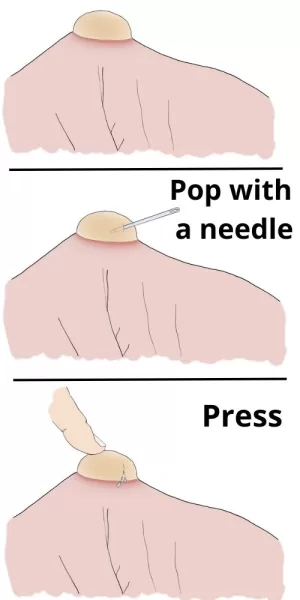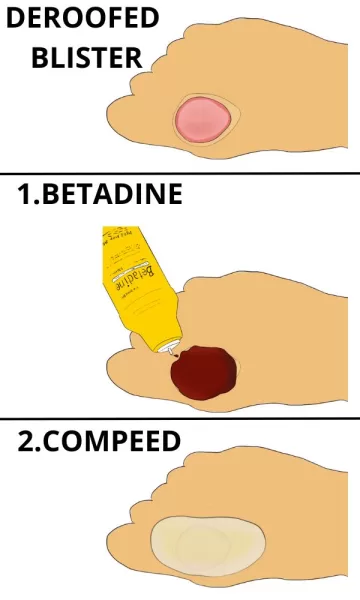We’ve all had blisters on our feet or hands at some point. However, I never know whether I should pop them or just leave them alone–until now.
So, what should you really do with them?
General rule: Leave the skin on
As a general rule, you shouldn’t mess with your blisters. They are useful: they are there for a reason.
The reason is they work as a protective mechanism.
The skin over the blister (the roof) prevents it from getting infected. That piece of skin is actually impermeable so it keeps dirt and bacteria away.
As long as the skin is intact, you’ll be safe from infection.
Also, if you pop it you can cause the skin to come off, leaving a large open sore that can get infected way more easily. The loose skin, even if bandaged, can shift around more easily and wear itself off. And then, it’s going to sting like crazy because your nerve endings will be exposed.
Most blisters heal on their own, so the only thing you need to do is:
- keep them clean and dry. Warm water and soap is enough. If you are a hiker, always wear clean socks.
- cover the blister. Use a bandage that is not too tight against the blister.
- use some padding. To relieve the pressure, you can cut some padding (like moleskin) into a donut shape and place it around your blister. Then, use a bandage to cover it.
- apply some ice. Cold can reduce pain and inflammation, but do it with care. Don’t apply ice directly, or you will burn your skin. Instead, cover it with a cloth.
When should you pop your blister?
There are some cases when it’s ok to pop your blister.
If your blister is too large or you will rub it against your shoe for hours, chances are it will burst anyway.
In that case, you may pop it. That way you’ll do it in a clean, neat way and it won’t get infected.
To pop the blister:
- Make sure it’s is as clean as possible. Wash the area with water and soap. Then, disinfect it with alcohol or hydrogen peroxide.
- Use sterile needles. If they are not available, you can sterilize a normal one. Just take one needle and soak it in alcohol for a few minutes. Another way: apply a flame to the tip of the needle with a lighter.
- Puncture the blister just once on one of the sides to let the fluid out. Using a sterile gauze, press the blister to empty it.
- Once empty, apply povidone-iodine with another sterile gauze, and then cover it with a bandage.

Never tear off the remaining portion of skin. It will dry out and fall off on its own once the wound is healed.
Meanwhile, it will protect the underlying area from infection.
When should you use hydrocolloid dressings?
Hydrocolloid dressings are very useful for deroofed blisters. That’s when the roof of the blister rubs off and you can see the “flesh” underneath.
These blisters are more painful and more likely to get infected. To protect them, we need to keep them moist with some hydrocolloid plasters, like Compeed.
First, clean them using some antiseptic, like povidone-iodine. It may sting a little.
Then, apply one Compeed plaster covering your deroofed blister.
This is how you treat a deroofed blister with Compeed:

When should you seek help?
In some cases, you should consult your doctor, just int case:
- if the blister is hot and red, or if there is pus coming out. In that case, your blister is infected
- you have very severe pain
- there’s a bad smell coming from the blister
- there is blood coming out of the blister
Leave a Reply